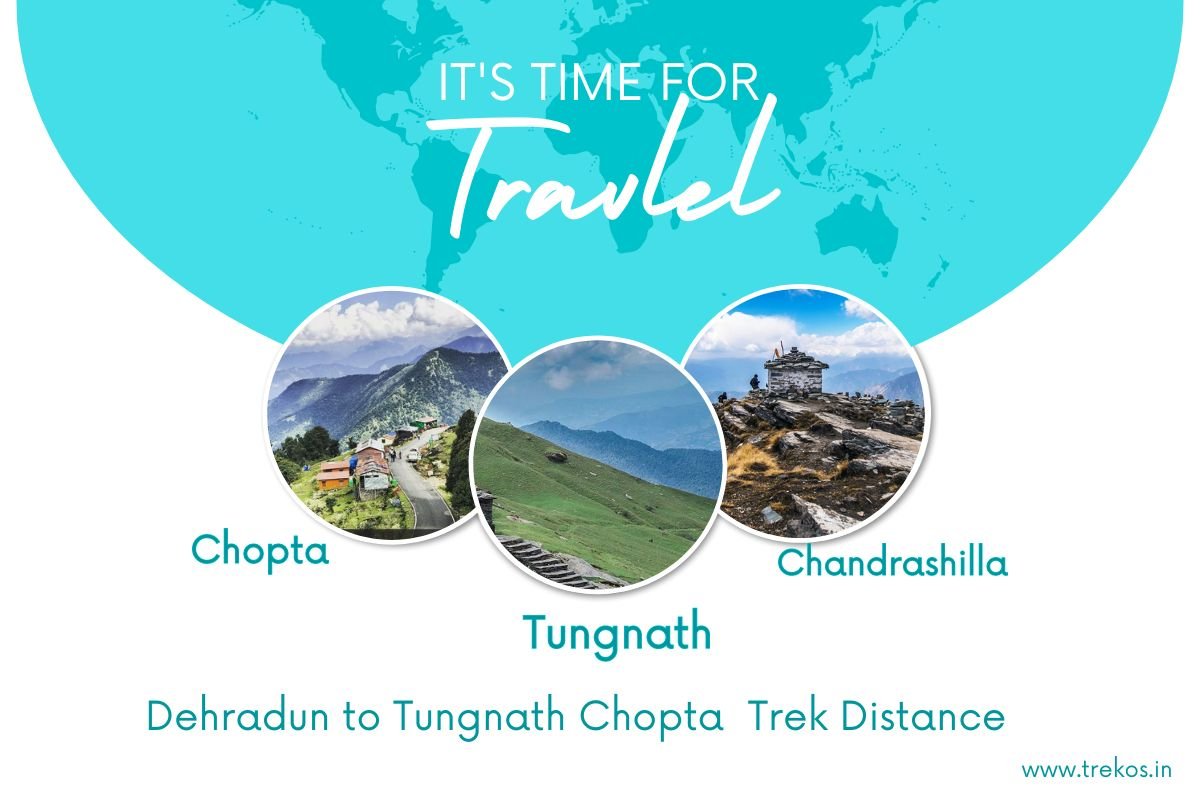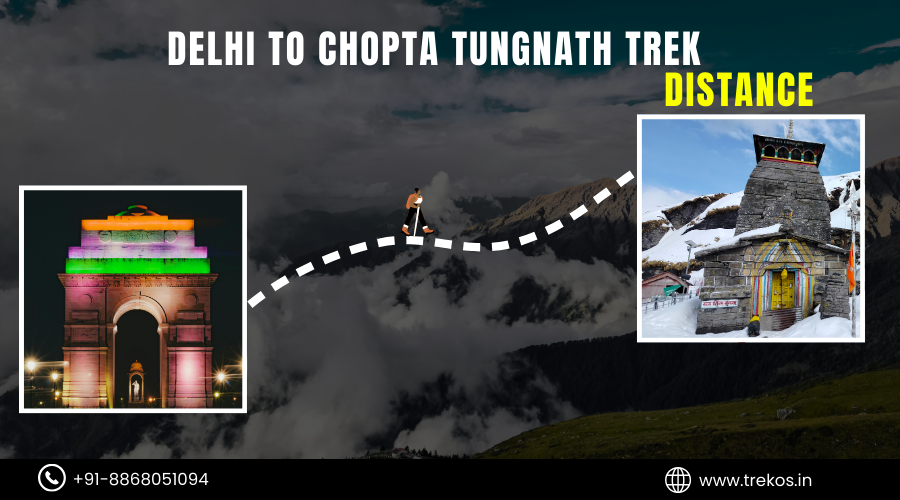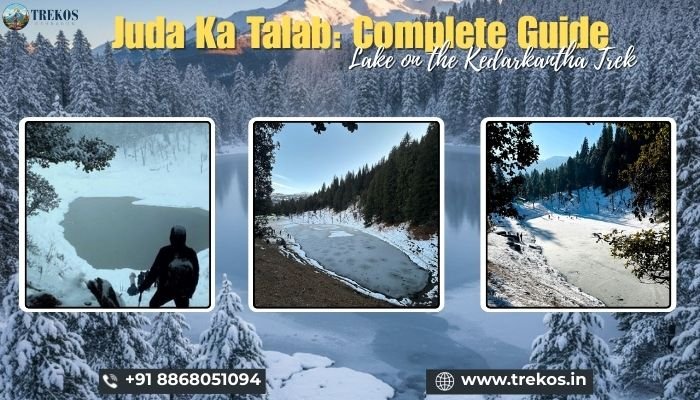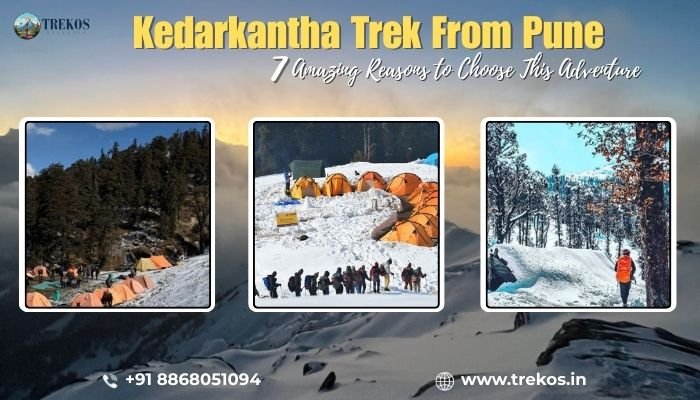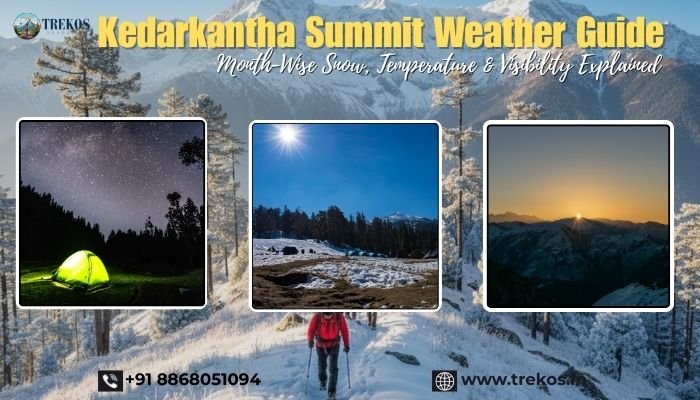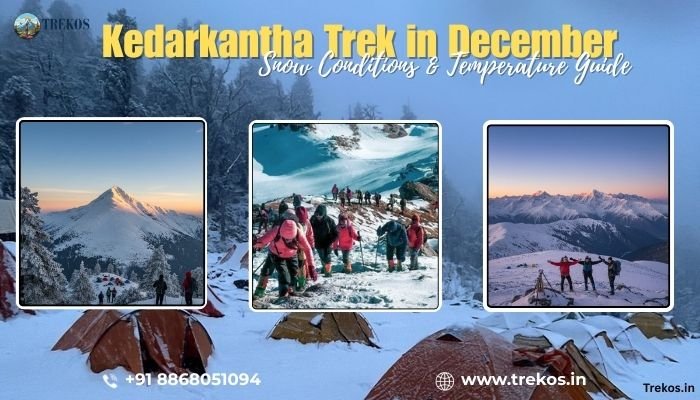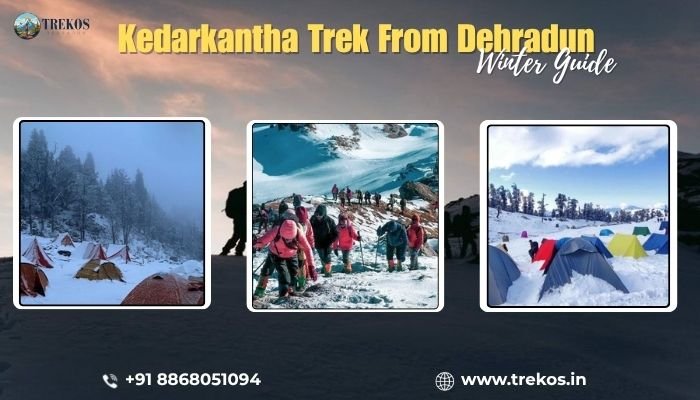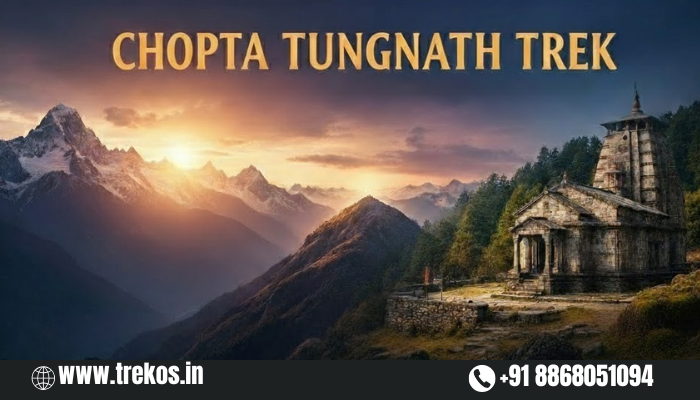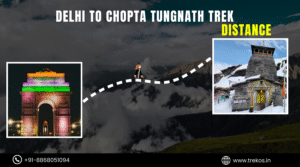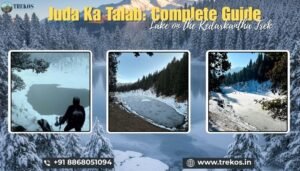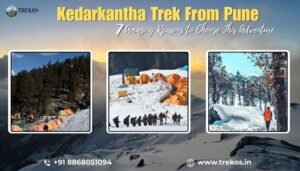Dehradun to Chopta Tungnath Trek Distance
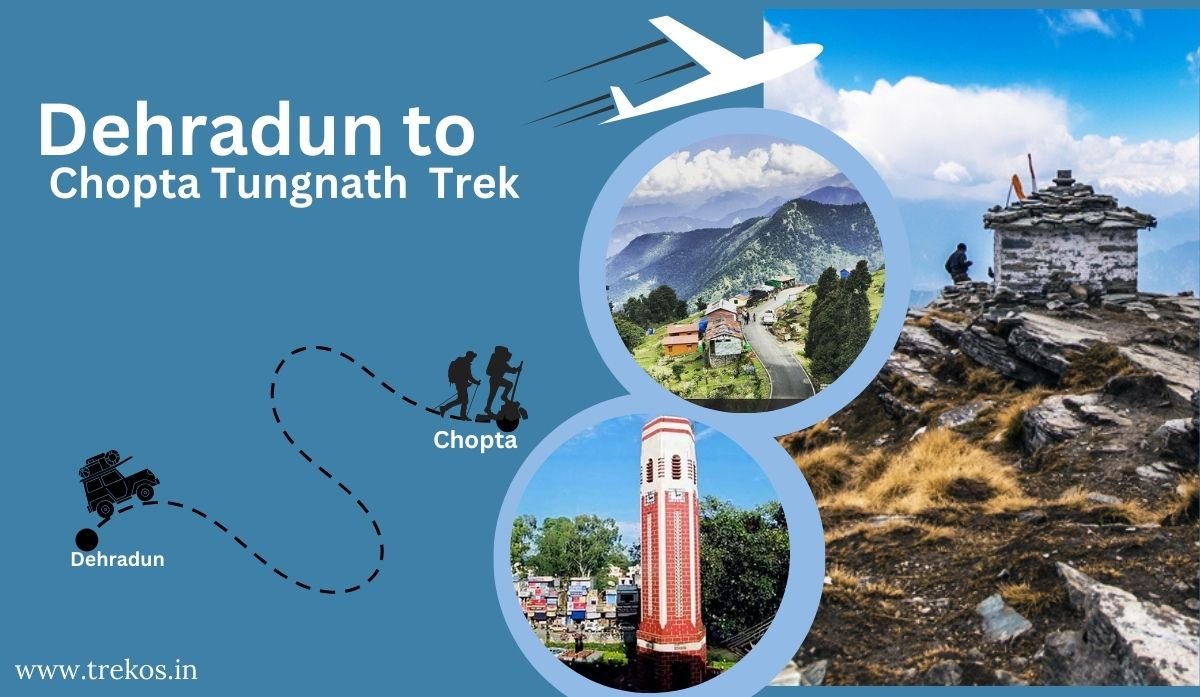
Spiritual Importance
Tungnath Temple has been built for about 1000 years.It is counted in Panch Kedar, And apart from this there are 4 more Kedar (Kedarnath, Madhyamaheshwar, Rudranath, Kalpeshwar). It is believed that the arms of Lord Shiva are worshiped here.
Tungnath Trek
Here the journey starts from the Chopta. Chopta is a hill station, which is also called mini Switzerland by the people who come here. This trek is approximately 3.5 km long. Which is famous for showing you very beautiful scenes. From here you can also see Nanda Devi, Trishul or Chaukhamba mountain.
Chandrashila Trek
There is another trek above the Tungnath temple which is called Tungnath to Chandrashilla trek. Its height is approximately 4000 km. From here, the entire Himalayan peaks are visible through snow at 360 degrees.
Best Time to Visit
The temple is accessible between April to November, as it is closed during winter due to heavy snowfall. The trek becomes more scenic during spring when the rhododendrons bloom, and autumn offers clear skies for mountain views.
Accommodations
There are basic guest houses and campsites in Chopta and along the trekking route. However, Tungnath itself offers minimal facilities, so many trekkers stay in Chopta. Tungnath is a must-visit for both nature lovers and spiritual seekers, offering a combination of religious significance and breathtaking Himalayan landscapes.
History of Tungnath Chopta : Dehradun to Chopta Tungnath Trek Distance
Tungnath has a rich history, deeply intertwined with Hindu mythology and the cultural heritage of the Garhwal Himalayas. Here’s a detailed overview of the history of Tungnath:
Mythological Origins :
Tungnath, as part of the Panch Kedar temples, is associated with a legend from the Mahabharata. After the Kurukshetra war, the Pandavas sought forgiveness from Lord Shiva for killing their kin. Lord Shiva, not wanting to forgive them easily, disguised himself as a bull and fled to the Himalayas.
The Pandavas pursued him, and at Tungnath, it is believed that Shiva’s arms appeared while the other parts of his body emerged at different locations, forming the five Panch Kedar temples. The hump appeared in Kedarnath, the arms at Tungnath, the navel at Madhyamaheshwar, the face at Rudranath, and the hair at Kalpeshwar.
As per this legend, Tungnath is revered as the spot where the arms of Lord Shiva appeared, and thus the temple is of great significance to Shiva devotees.
Temple Construction:
The exact date of the temple’s construction is unclear, but it is believed to be over 1,000 years old. It is said that the Pandavas built the Tungnath temple to honor Lord Shiva and atone for their sins from the war. The architecture of the temple reflects the style typical of the Garhwal region, using stone with a simple yet profound design.
The temple’s remote location in the high Himalayas meant that it remained largely untouched by major historical events, allowing it to maintain its ancient charm.
Cultural and Religious Significance:
Tungnath is considered one of the holiest Shiva temples and holds immense religious significance for Hindus. As part of the Panch Kedar, it is an essential pilgrimage destination for devotees of Lord Shiva.
Traditionally, the priests of the Tungnath temple belong to the Madhva sect (followers of the philosopher Madhvacharya), and the chief priest (Rawal) is usually from South India, specifically from the Brahmin communities of Karnataka.
Historical Preservation:
Due to its high altitude and remote location, Tungnath remained largely isolated throughout history, preserving its ancient spiritual and architectural heritage.
Over the centuries, Tungnath has been a center for meditation and asceticism for numerous sages and spiritual seekers, drawn by its tranquility and the belief that meditating there brings one closer to Moksha (liberation).
Modern History:
In recent years, Tungnath has gained popularity not only among pilgrims but also among trekkers and nature enthusiasts due to the growing interest in adventure tourism and spiritual retreats in the Himalayas.
Despite increased footfall, efforts have been made to maintain the sanctity of the site, and the local communities, alongside the temple authorities, continue to uphold the traditions and rituals that have been in practice for centuries.
The temple closes during the winter months, as heavy snowfall makes it inaccessible. During this time, the deity is moved to Makkumath, a village lower in altitude, where worship continues until the temple reopens in spring.
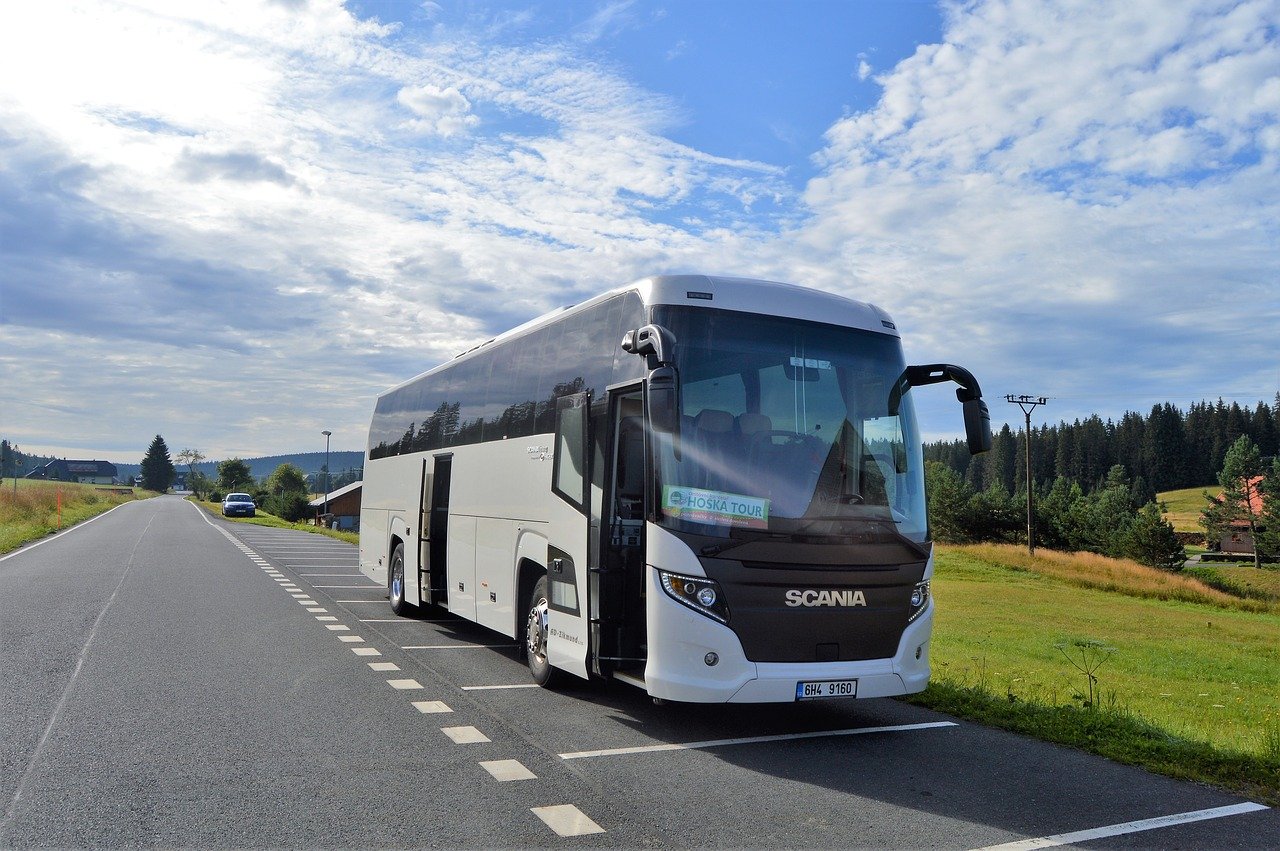
To travel from Dehradun to Tungnath, you’ll need to combine road travel with a trek. Here’s a step-by-step guide:
By Road from Dehradun to Chopta:
Chopta is the base for the Tungnath trek, and it is approximately 247 km from Dehradun.
By Taxi or Private Vehicle
Duration: 7-9 hours (depending on road conditions)
You can hire a private taxi from Dehradun to Chopta, which will be a comfortable and convenient option. Taxis are available at the airport, railway station, or in the city.
The route passes through scenic landscapes, with the following major points along the way:
Dehradun → Rishikesh (45 km)
Rishikesh → Devprayag (75 km)
Devprayag → Rudraprayag (70 km)
Rudraprayag → Ukhimath (48 km)
Ukhimath → Chopta (28 km)
From Chopta, you’ll begin the trek to Tungnath.

2: By Bus/Shared Jeep
: Dehradun to Rishikesh
From Dehradun ISBT or Rishikesh ISBT, you can take a state-run bus or a shared jeep to Rishikesh (45 km). This leg of the journey takes about 1.5 hours.
: Rishikesh/Haridwar to Ukhimath
From Rishikesh, take a bus or shared jeep to Ukhimath, which is about 190 km away and will take around 6-7 hours.
: Ukhimath to Chopta
From Ukhimath, take a local taxi or shared jeep to Chopta, which is about 20 km and takes about 45 minutes to 1 hour.
- Trek from Chopta to Tungnath:
Once you reach Chopta, you will need to trek approximately 3.5 km (2.2 miles) to reach the Tungnath Temple.
The trek is moderate in difficulty, and it usually takes around 2-3 hours to complete. The path is well-marked and offers breathtaking views of the surrounding peaks and valleys.
The trek continues upward from Tungnath to Chandrashila Peak (optional) for an additional 1.5 km if you wish to experience panoramic Himalayan views.
- Best Time to Visit: April to November is the best time to visit Tungnath. The temple is closed during winter (December to March) due to heavy snowfall, making the trek inaccessible.
Key Points:
Distance from Dehradun to Chopta: Approx. 220 km
Trek distance from Chopta to Tungnath: 3.5 km
Modes of Transport: Taxi, bus, or shared jeep.
Estimated Travel Time: 7-9 hours by road to Chopta, plus 2-3 hours for the trek.
This route offers a beautiful and scenic journey, combining the cultural richness of Uttarakhand and its natural beauty.
Important Equipment for Dehradun to Chopta Tungnath Trek Distance
Clothing and Footwear
Trekking Shoes: A sturdy pair of waterproof trekking boots with a good grip is essential for navigating rocky, uneven terrain and possibly snow-covered trails.
Layered Clothing:
Base Layer: Moisture-wicking thermal wear to keep you warm and dry.
Middle Layer: Insulating layers like fleece or down jackets to retain heat.
Outer Layer: A waterproof and windproof jacket to protect you from wind, rain, and snow.
Trekking Pants: Quick-drying, lightweight pants are ideal. Avoid jeans, as they can be uncomfortable and take too long to dry.
Warm Hat and Gloves: Since temperatures can drop significantly at high altitudes, thermal or woolen gloves and a warm hat (or balaclava) are important.
Woolen Socks: Carry multiple pairs of thick, moisture-wicking socks to keep your feet dry and warm.
Backpack and Storage
Backpack (50-60 Liters): A well-fitted, durable trekking backpack is essential to carry your gear. It should have padded straps, a hip belt, and adequate compartments for easy access.
Rain Cover for Backpack: Weather in the mountains can be unpredictable, so a waterproof cover is essential to protect your gear.
Sleeping Gear
Sleeping Bag: Choose a warm sleeping bag rated for temperatures below freezing (at least -10°C), especially for camping at higher altitudes where nights can be cold.
Sleeping Pad/Mat: If you’re camping, a good quality sleeping pad provides insulation from the cold ground and adds comfort.
Trekking and Safety Gear
Trekking Poles: Useful for providing stability on steep ascents and descents. They reduce stress on your knees and help with balance, especially on snowy or slippery terrain.
Headlamp with Extra Batteries: A must for walking in low-light conditions, especially if you’re starting your trek early or continuing late into the evening.
Sunglasses: Protect your eyes from the sun’s glare, especially at high altitudes where UV exposure is stronger.
Sunscreen and Lip Balm: Choose a high-SPF sunscreen to protect your skin from harsh UV rays, and a lip balm with SPF to prevent chapped lips.
First Aid Kit: Include essentials like band-aids, antiseptic cream, blister care, painkillers, and any personal medications. Add items like Diamox for altitude sickness, if necessary.
Water Bottle or Hydration Bladder: Staying hydrated is crucial at higher altitudes. Carry at least 2 liters of water. If you’re trekking in cold weather, consider insulated bottles to prevent freezing.
Water Purification Tablets or Filter: Freshwater sources might not always be available, so carry water purification tablets or a portable filter to make any water you find safe to drink.
Food and Cooking Essentials
Energy Bars and Snacks: Carry high-energy snacks like nuts, energy bars, and chocolate to keep your energy levels up during the trek.
Camping Stove (if camping): If you’re camping overnight, a portable stove with fuel canisters and basic utensils (like a cooking pot and spoon) will be necessary for preparing meals.
Camping Equipment (if applicable)
Tent: If you’re planning to camp along the trail, a lightweight, weather-resistant tent is crucial to protect you from the elements. A three-season tent is generally suitable for this trek.
Tarp or Groundsheet: To protect your tent from moisture and provide extra insulation from the ground.


